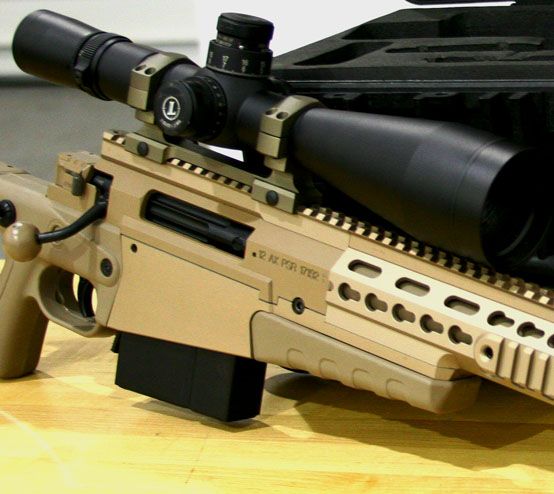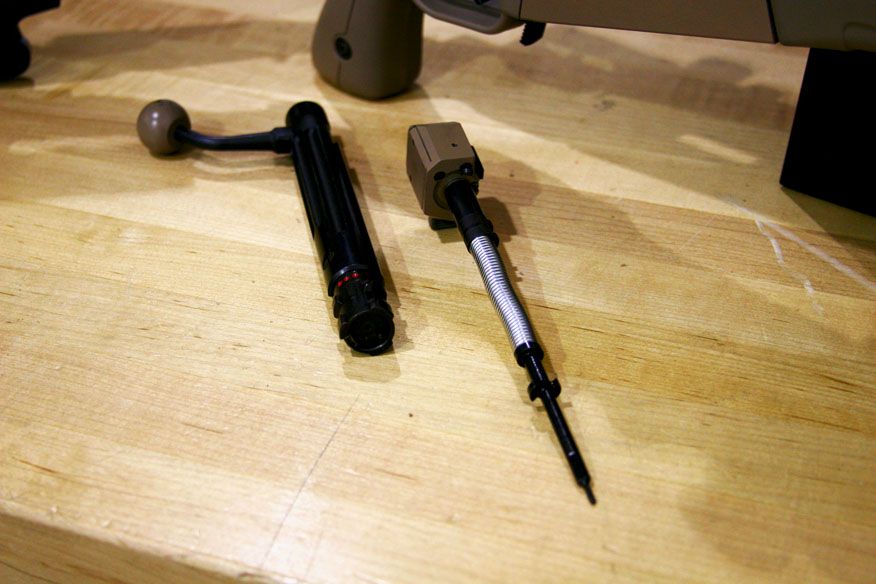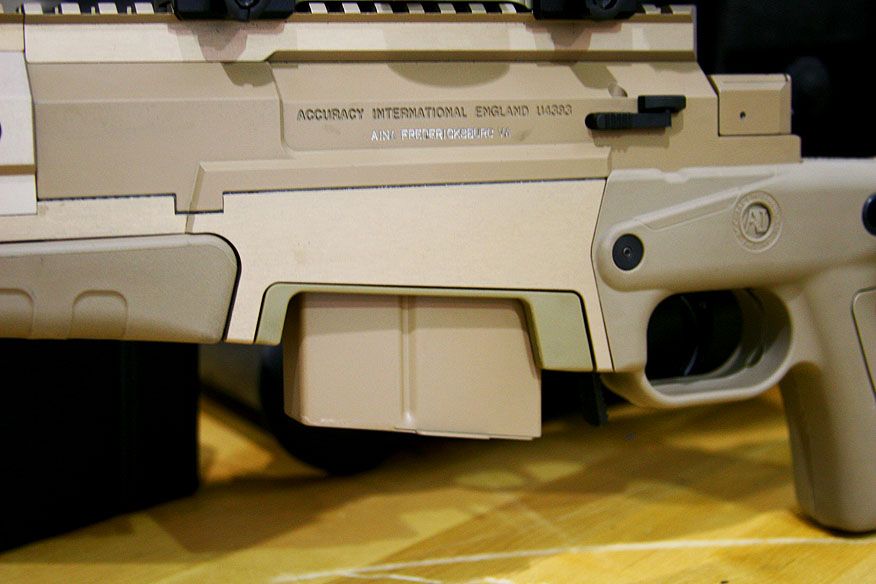I’ve been a fan of Accuracy International magazines for quite some time but it wasn’t until just recently that I took the plunge and ordered an AICS AX stock for my Remington 700. After using the AX stock for a while I’m still a big fan so when I had the opportunity to visit Accuracy International’s facility in Fredericksburg, VA I jumped at the chance. In talking to Scott Seigmund, Vice President of Accuracy International North America, we arranged for me to stop by yesterday afternoon to check things out while the shop was pretty quiet. Lucky for me I was able to duck out of work a little early and hit the road in hopes of making it down there just after lunch time. AINA is tucked back in on an industrial road in a relatively non-descript metal warehouse building that looks just like all the others around it. The only clue as to whom and what are inside is a single AI logo on the front door, otherwise it would be easy to dismiss it for anything else. Truth be told when I arrived in the parking lot I wasn’t sure that I had arrived in the right place for a moment.
Scott was gracious enough to let me in though and offered me a seat in the office lobby while he helped wrap up some business. Magazine articles, pictures, and certificates of appreciation adorned the walls and desktops but the short action AW magazine being used a penholder definitely caught my attention, it was just kind of cool. Scott and I sat out front for a good long while talking about most things AI and rifle related from his time in Tennessee, the history of Accuracy International, to where things might be going in the future. As much as this was just a cool visit it was also a learning experience as I got quite an education in the AI magazines to boot. For example, the plate at the front of AICS magazines is there to act as a spacer to keep ammunition from going beyond the feed ramp to ensure reliable feeding. This and some other details were something that I didn’t know before but I thought it spoke to AI’s commitment to engineering the most reliable systems available.
Scott led me into the back of the facility and the first sight I was greeted with was AI’s PSR resting in a cleaning cradle but more on that later. I chuckled to myself a little bit when I looked down and there was a box full of AX forends just sitting loosely in a box, probably discarded after some prototyping work. In the next room was where rifles and parts are assembled and shipped out to distributors like Mile High, Euro Optics, and others. One might be surprised about how small an operation it is putting together the chassis systems, because it’s literally just a few workbenches and fixtures. In talking to Scott nearly all of the components that make up an AICS stock are made here in the US, only the plastic skins come from England. This is because it didn’t make much sense to have to set up two molds on both sides of the pond for the same product.
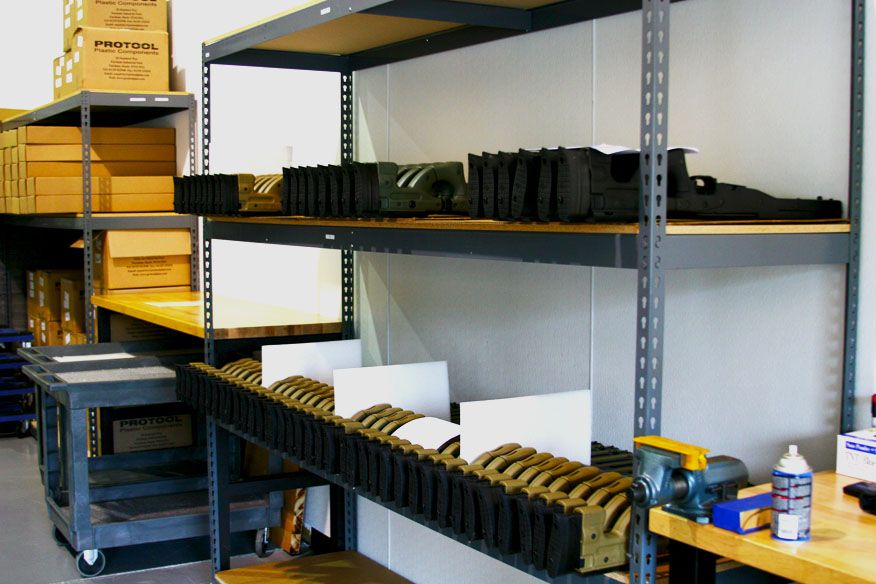
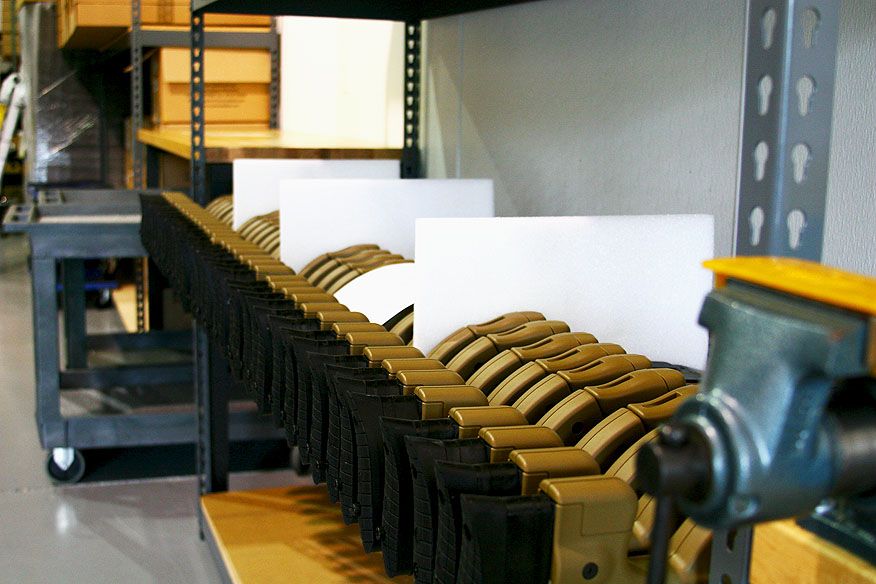
We moved back to an area where they barrel up actions and I was given the opportunity to break the PSR down into its compact carrying case. I was amazed how easy it was to completely break the rifle down with nothing more than a 4mm hex wrench, conveniently stored under the cheek rest. As I was disassembling the rifle Scott explained the reasons things were designed the way they were from the barrel, to the bolt, to the rail system I was left more and more impressed. I think a few times all I could manage to say was just “wow”.
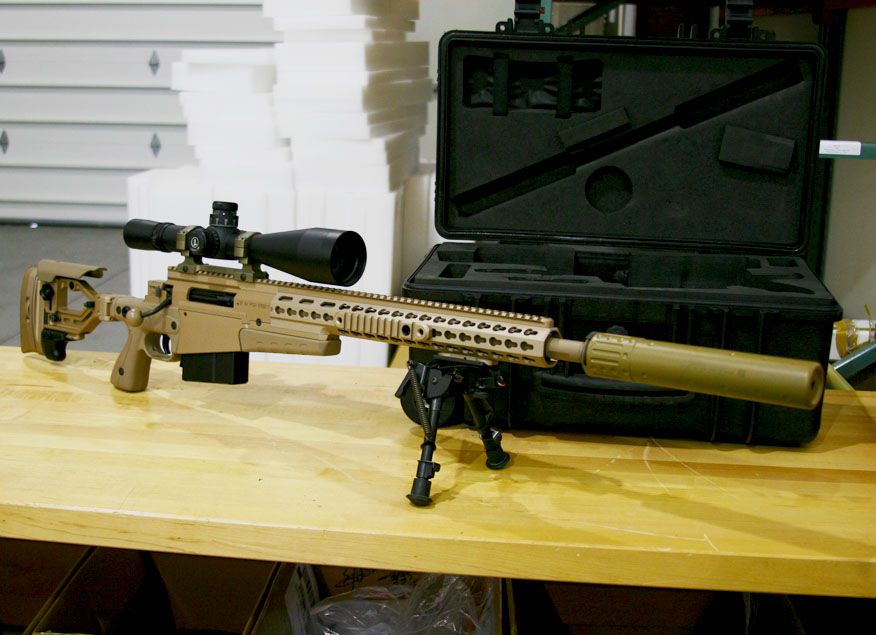
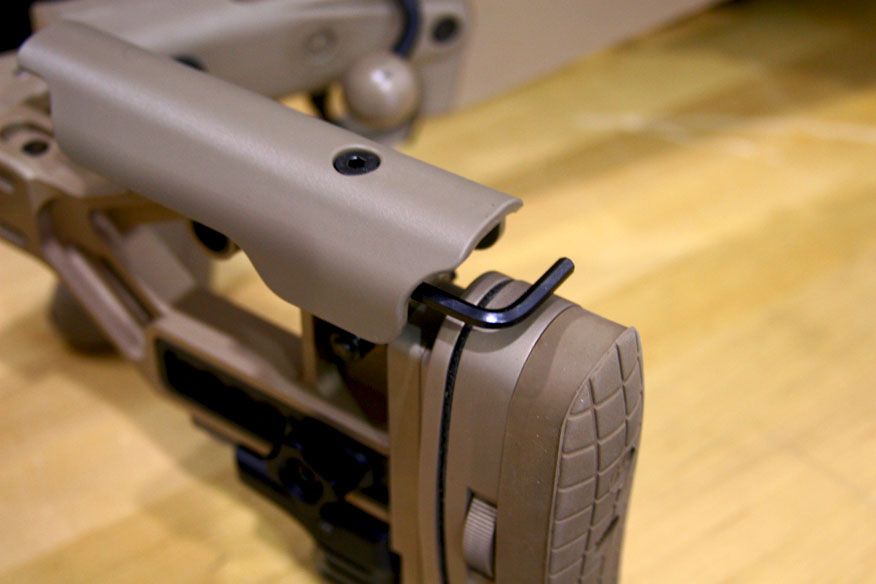
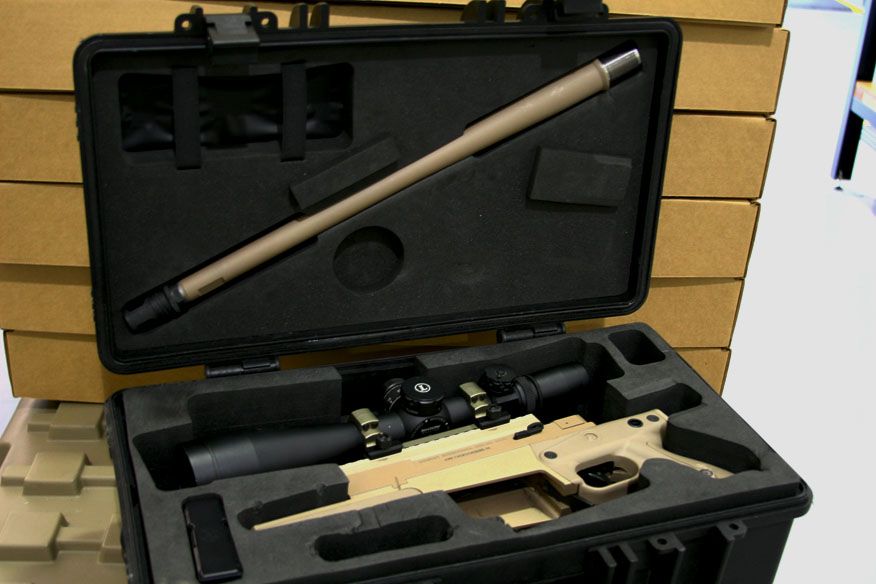
There's still plenty of room for a cleaning kit, a sling, and at least another magazine.
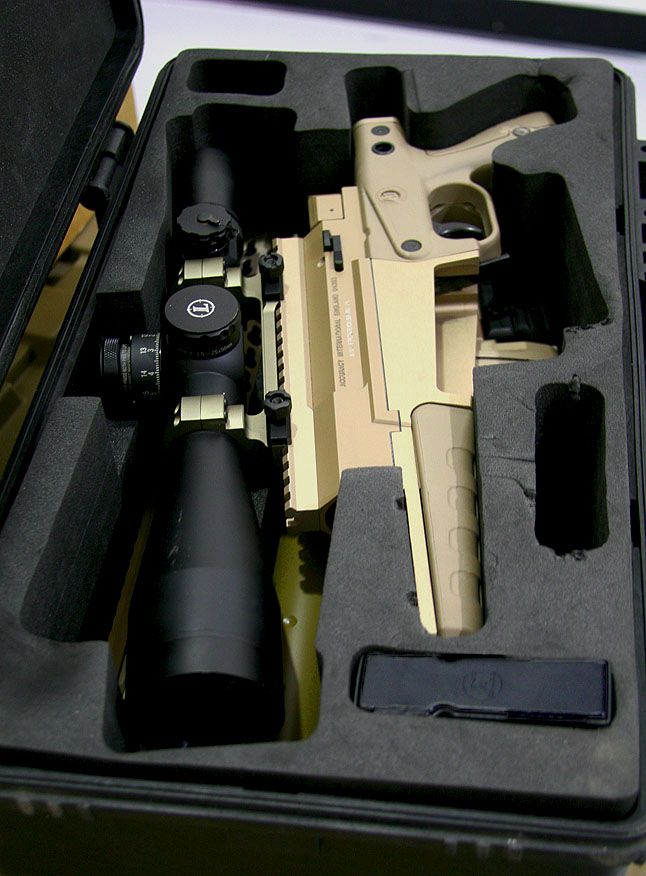
Under the action and scope you can just make out the PSR's forend and the AAC suppressor, they go into perfectly fitted cutouts.
An example of the rifle's engineering is the bolt and while it is a simple enough part in the eyes of some AI went above and beyond when they designed it. An AW-type bolt is now standard amongst the AE, AW, and AX rifles with a three-position safety and the capability to be disassembled without tools. The tolerances on the bolts are also so good that they can be swapped between rifles that have the same bolt face without the need for any gunsmithing. An interesting feature that I asked Scott about was the purpose of two small “hooks” about ¾ of the way down the firing pin. He explained that if bolt is not all the way in battery when the trigger is pulled the hooks catch a corresponding area inside the firing pin and rotate the bolt fully into battery before the primer is struck. This ensures shooter safety even in the worst of conditions.
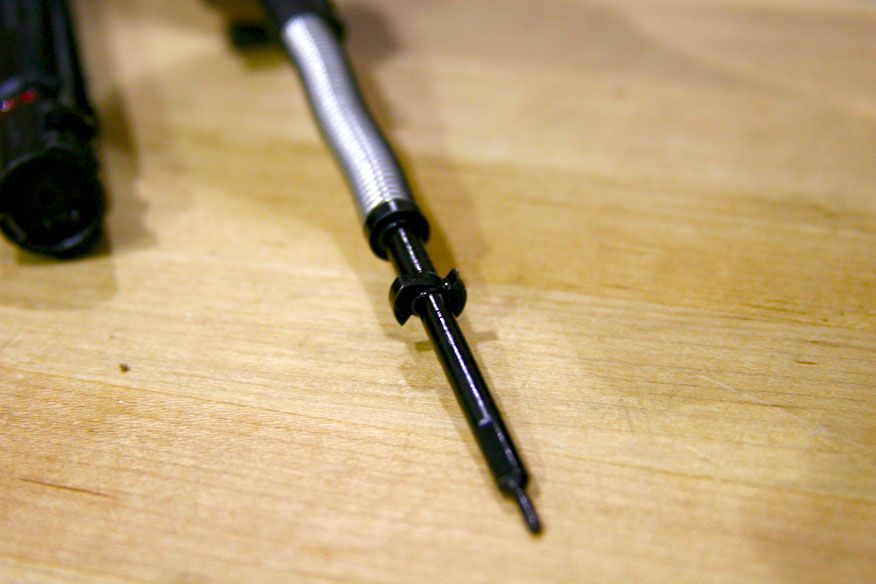
The barrel of the PSR and AX was something else that I had questions about since I had read that it was beefed up in the chamber area in the newer AX models. Scott held two barrels side by side, one from the PSR, the other a standard AW barrel and the difference was noticeable. There was just a lot more steel around the chamber and Scott said that the PSR barrel could take the pressure of a .338LM round without support around the chamber it is that strong.
I also liked the trick magazine set up that the PSR utilizes so that it can use short action AW magazines, a 10 round .300WM magazine, or 10 round .338 magazine. A polymer spacer is designed to engage the magazine well and allow a short action magazine to function perfectly in the action and removing it is as easy using the 4mm hex wrench to depress the spring loaded button on the side. With the spacer and hex wrench I fathom that it would be possible to go from a .338 LM chambered rifle to a .308 Winchester in about two minutes, maybe less for a well practiced person.
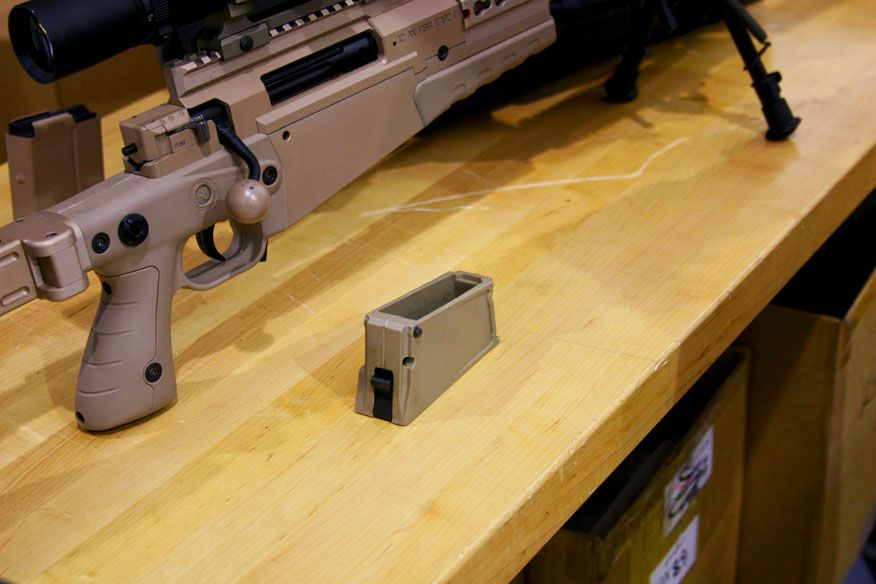
You can see the button in the upper portion of the insert, it fits into the corresponding hole visible on the right side of the PSR, just below the ejection port.
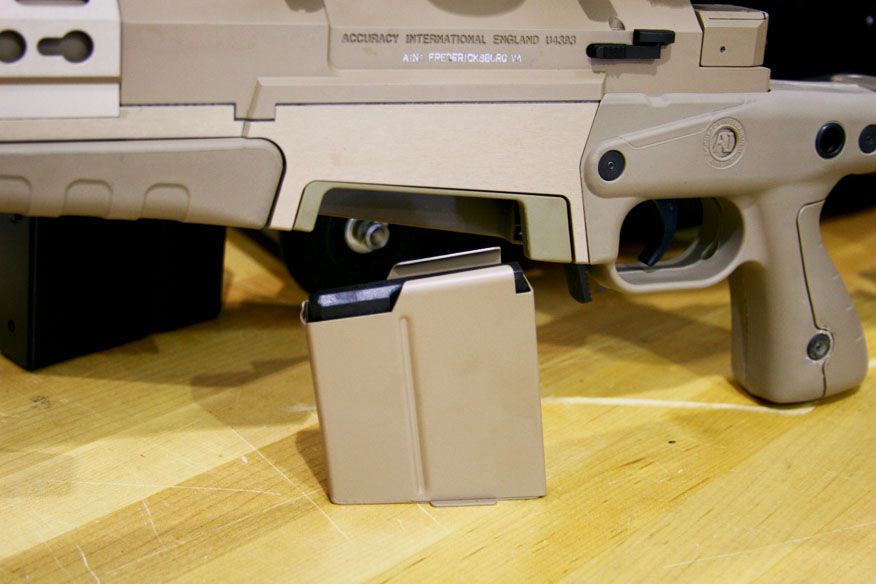
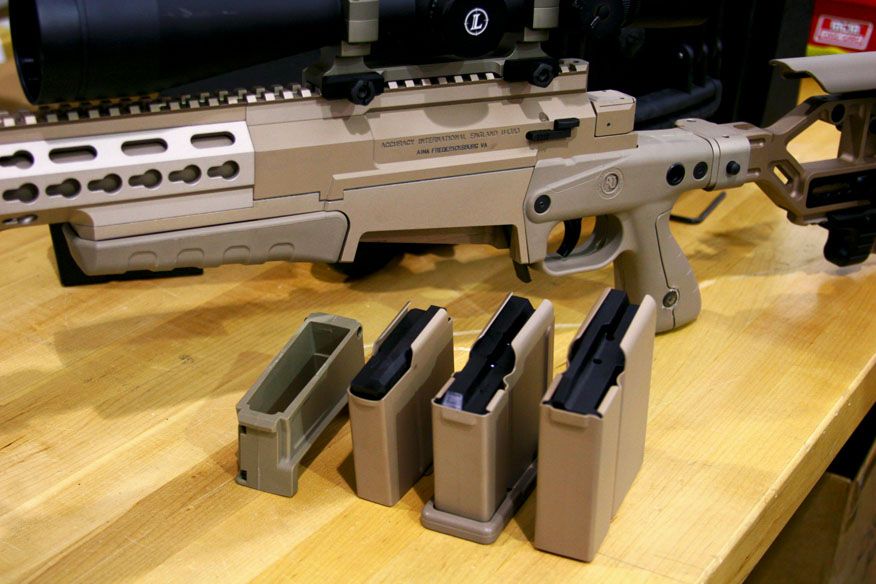
The PSR magazine family from L to R. Magazine Adapter, .308 AW magazine, 10 rd .300WM magazine, and 10 rd .338LM Magazine.
I ended up spending half a day at AINA talking with Scott about rifles, optics, rifle cleaning, and learning more about Accuracy International that I ever thought I would. My time there revealed how much engineering goes into every product AI makes to turn it into the most robust and reliable product available for the customer, no matter the conditions. Even though my relatively modest collection of AI products only includes one chassis and a fist full of magazines I'm already planning how to get more.
I'd like to thank Tom Irwin and Scott Seigmund for a wonderful visit to AINA.
Scott was gracious enough to let me in though and offered me a seat in the office lobby while he helped wrap up some business. Magazine articles, pictures, and certificates of appreciation adorned the walls and desktops but the short action AW magazine being used a penholder definitely caught my attention, it was just kind of cool. Scott and I sat out front for a good long while talking about most things AI and rifle related from his time in Tennessee, the history of Accuracy International, to where things might be going in the future. As much as this was just a cool visit it was also a learning experience as I got quite an education in the AI magazines to boot. For example, the plate at the front of AICS magazines is there to act as a spacer to keep ammunition from going beyond the feed ramp to ensure reliable feeding. This and some other details were something that I didn’t know before but I thought it spoke to AI’s commitment to engineering the most reliable systems available.
Scott led me into the back of the facility and the first sight I was greeted with was AI’s PSR resting in a cleaning cradle but more on that later. I chuckled to myself a little bit when I looked down and there was a box full of AX forends just sitting loosely in a box, probably discarded after some prototyping work. In the next room was where rifles and parts are assembled and shipped out to distributors like Mile High, Euro Optics, and others. One might be surprised about how small an operation it is putting together the chassis systems, because it’s literally just a few workbenches and fixtures. In talking to Scott nearly all of the components that make up an AICS stock are made here in the US, only the plastic skins come from England. This is because it didn’t make much sense to have to set up two molds on both sides of the pond for the same product.


We moved back to an area where they barrel up actions and I was given the opportunity to break the PSR down into its compact carrying case. I was amazed how easy it was to completely break the rifle down with nothing more than a 4mm hex wrench, conveniently stored under the cheek rest. As I was disassembling the rifle Scott explained the reasons things were designed the way they were from the barrel, to the bolt, to the rail system I was left more and more impressed. I think a few times all I could manage to say was just “wow”.



There's still plenty of room for a cleaning kit, a sling, and at least another magazine.

Under the action and scope you can just make out the PSR's forend and the AAC suppressor, they go into perfectly fitted cutouts.
An example of the rifle's engineering is the bolt and while it is a simple enough part in the eyes of some AI went above and beyond when they designed it. An AW-type bolt is now standard amongst the AE, AW, and AX rifles with a three-position safety and the capability to be disassembled without tools. The tolerances on the bolts are also so good that they can be swapped between rifles that have the same bolt face without the need for any gunsmithing. An interesting feature that I asked Scott about was the purpose of two small “hooks” about ¾ of the way down the firing pin. He explained that if bolt is not all the way in battery when the trigger is pulled the hooks catch a corresponding area inside the firing pin and rotate the bolt fully into battery before the primer is struck. This ensures shooter safety even in the worst of conditions.

The barrel of the PSR and AX was something else that I had questions about since I had read that it was beefed up in the chamber area in the newer AX models. Scott held two barrels side by side, one from the PSR, the other a standard AW barrel and the difference was noticeable. There was just a lot more steel around the chamber and Scott said that the PSR barrel could take the pressure of a .338LM round without support around the chamber it is that strong.
I also liked the trick magazine set up that the PSR utilizes so that it can use short action AW magazines, a 10 round .300WM magazine, or 10 round .338 magazine. A polymer spacer is designed to engage the magazine well and allow a short action magazine to function perfectly in the action and removing it is as easy using the 4mm hex wrench to depress the spring loaded button on the side. With the spacer and hex wrench I fathom that it would be possible to go from a .338 LM chambered rifle to a .308 Winchester in about two minutes, maybe less for a well practiced person.

You can see the button in the upper portion of the insert, it fits into the corresponding hole visible on the right side of the PSR, just below the ejection port.


The PSR magazine family from L to R. Magazine Adapter, .308 AW magazine, 10 rd .300WM magazine, and 10 rd .338LM Magazine.
I ended up spending half a day at AINA talking with Scott about rifles, optics, rifle cleaning, and learning more about Accuracy International that I ever thought I would. My time there revealed how much engineering goes into every product AI makes to turn it into the most robust and reliable product available for the customer, no matter the conditions. Even though my relatively modest collection of AI products only includes one chassis and a fist full of magazines I'm already planning how to get more.
I'd like to thank Tom Irwin and Scott Seigmund for a wonderful visit to AINA.

